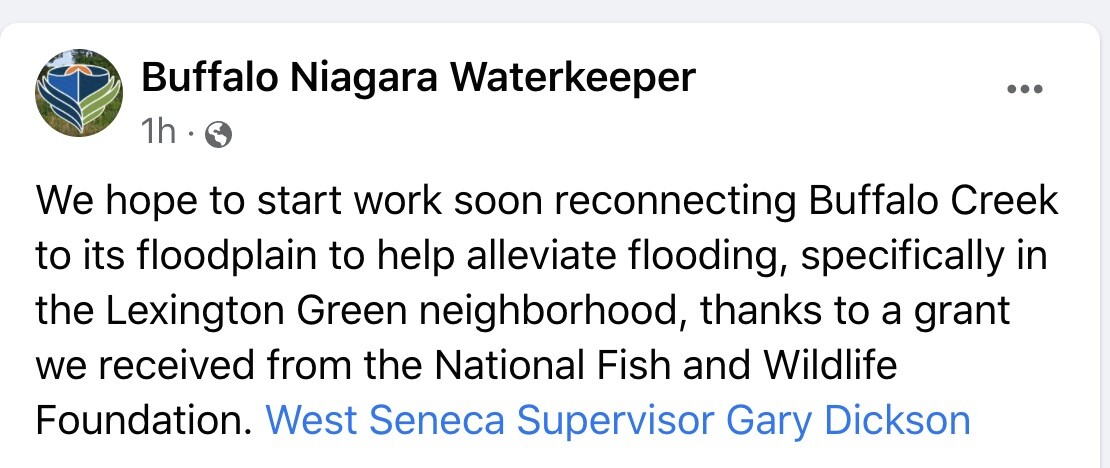WEST SENECA, NY (WKBW) — Some residents living in the Lexington Green neighborhood in the Town of West Seneca were forced out of their homes and rescued Thursday night due to rising waters along Buffalo Creek.
Sandbags now frozen on Lexington Green in West Seneca where flooding from the Buffalo Creek was a problem for residents. @WKBW pic.twitter.com/9xyXGnrZvA
— . (@eileenwkbw) February 18, 2022
But that neighborhood now has the attention of the Buffalo Niagara Waterkeeper to figure out possible flooding solutions.
“In creeks, in rivers — in water in general is always in motion — it's very hard to contain it,” remarked Jill Jedlicka, executive director, of Buffalo Niagara Waterkeeper.
On Friday Buffalo Niagara Waterkeeper issued a social media post about Buffalo Creek.

It stated, “We hope to start work soon reconnecting Buffalo Creek to its floodplain to help alleviate flooding, specifically in the Lexington Green neighborhood, thanks to a grant we received from the National Fish and Wildlife Foundation.”
“We're actually about to go out to proposal to get bids in on doing some of this preliminary assessment work on what potentially could be done, and once we have some of these concepts, then we are hoping to work in partnership with the National Fish and Wildlife Foundation to get the larger funding invested and actually making the change and making the improvements,” Jedlicka explained.

Jedlicka tells me the studies will happen this year, but it will be a few years before any possible changes are made.
“It’s complex. You've got to run models. You've got to do the hydrology. You've got to do the studies, so the studies will happen this year. Then we'll hopefully be able to put in an application and partnership and secure the funding to actually implement,” Jedlicka said.
West Seneca Supervisor Gary Dickson says one of the solutions would be to create a “flood bench” in the land.

“And with a flood bench, you know, you can do it in pieces. You do a little bench, then in another year, gets another couple of million dollars to do more,” Dickson described.
Dickson says the Waterkeeper study is key because it will resolve legal issues and allow the town to apply for more state and federal grants.
“The whole idea being — when the ice jams, the water that builds up has a place to go and not to our, you know, neighborhoods,” replied Dickson. “They're going to study what properties would be used, how we get the legal title or what kind of easements are needed, and how much dirt to move.”

Dickson says the 2015-2016 U.S. Army Corps of Engineers did consider building a levy in that area, but determined it was "not cost-effective" because there had only been a couple of past flooding issues in 2014 and 1979. But Dickson said that's changed and wants the agency to reconsider.
“The best design is one that is one with nature, so you can allow for some movement of water, but of course nobody wants residences or people's lives to be put in danger or property to be damaged,” Jedlicka noted.




